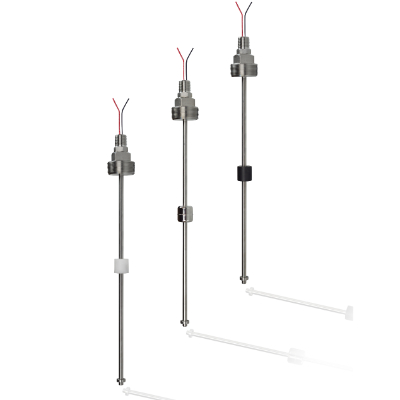Miniature Continuous Float Level Sensors
They are designed for monitoring dispensed agricultural fertilisers & high-value chemicals, tank level monitoring and lubrication applications. These sensors are capable of fitting into small tanks (4 - 5 inches). The compact physical dimensions of the float & stem and small deadband take little space in the tank, leading to more usable tank volume.




